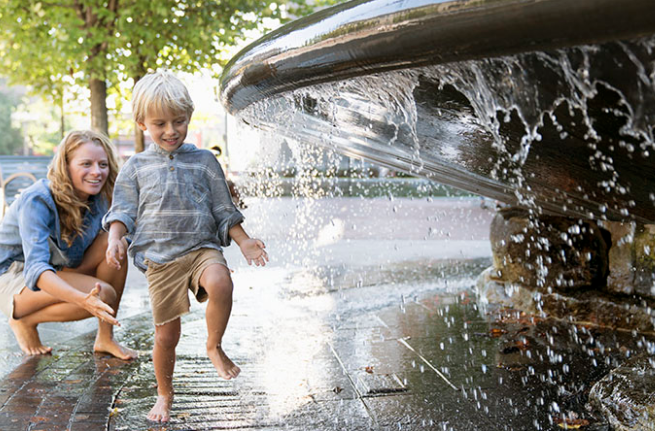 Pack up the pool toys, the vacation plans and the camp memories: This week, Western North Carolina returns to school.
Pack up the pool toys, the vacation plans and the camp memories: This week, Western North Carolina returns to school.
The return of structure after a long summer, though, can have students and families out of practice when it comes to safety. In addition to lessons on history and science this semester, Mercy Urgent Care wants to remind parents, families and children of safety tips to remember this week — and the rest of the year.
Buy the right supplies –
Kids grow like weeds, going from tiny to towering before you know it. These growth spurts make their bodies extra vulnerable to outside influences — and this is especially true with the lift-and-lug of heavy backpacks, which can cause poor posture, back problems and shoulder pain.
Though it may be hard to lighten the load in your child’s backpack, buying the right kind may bring him or her some relief.
First, look for a backpack that boasts an ergonomic design, in a size that fits your child’s body. According to the National Safety Council, backpacks should never be wider or longer than a child’s torso, and shouldn’t hang more than 4 inches below the waist.
Backpacks should have a padded back and shoulder straps and hip or chest belts to transfer some of the weight off the shoulders. Multiple compartments help distribute the weight, as do compression straps on the side or bottom.
To keep kids back-pain free during the school year, the American Chiropractic Association recommends backpacks weigh no more than 5-10 percent of a child’s weight. Though it might be tempting to buy an extra-large backpack, keep in mind that kids tend to carry as much as they can — overloading their backs with unnecessary items, stuffing papers and belongings to the bottom until spring.
This year, help your child go through his or her backpack on a regular basis to unload it of unnecessary items.
Have a safe commute –
A child’s first real sense of freedom from parents is often on the way to or from school. In this brief timespan, kids are trusted to make safe decisions without adult supervision, whether they’re walking, biking, bus-riding or driving.
Children who walk to school should always stay alert on their paths, and parents should practice the route with the child beforehand. Do not use headphones, talk on the phone or text while en route to school — and always walk on the sidewalk. If no sidewalk is available in the area, children should walk facing oncoming traffic. Make sure children know proper pedestrian rules — stopping to look both ways before crossing to street (or waiting for the appropriate signal where applicable). Remind kids to never dart out in front of a car, even if it appears to be parked.
Children who bike to school should have (and wear) a helmet that is fitted and secured properly, wear bright clothing and be well-versed on the rules of the road. Bicyclists must ride single-file on the right side of the road, following traffic laws and using hand signals when turning. Children riding bikes must come to a complete stop before crossing the street and walk their bikes across. While riding, children should watch out for obstacles, such as opening car doors and other unexpected hazards.
Bus-riders should know their pick-up and drop-off locations well, and should wait at least six feet from the curb before the bus arrives. When the bus arrives, children should enter the bus one at a time, paying careful attention while climbing the steps. Once seated, children should buckle up, if buckles are available — and stand to exit only when the bus comes to a complete stop. When exiting the bus, children should know to never cross in front of the bus, unless they can see that all lanes of traffic are stopped. The safest way to cross the street after exiting a bus is to walk at least 10 feet ahead and check for drivers in other lanes.
Teens who drive should take extra precaution when en route to school. Though they’re often notorious for their indestructible attitudes, it’s important for teens to remember just how dangerous driving can be — and that they’re not the only ones that can be injured in an accident. Before your driving-age teen heads off on his or her own, remind them to buckle up, to follow road laws (yes, all of them) and to use extra caution in school zones. No matter how well your teen can drive, inexperience contributes to thousands of car crashes each year.
From all of us at Mercy Urgent Care, have a safe, healthy and happy back-to-school experience!

